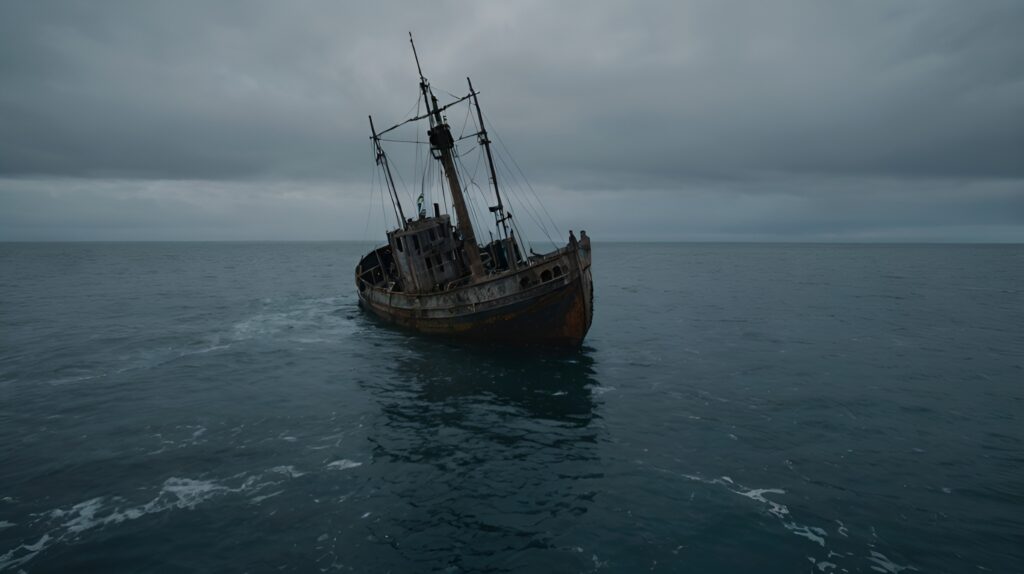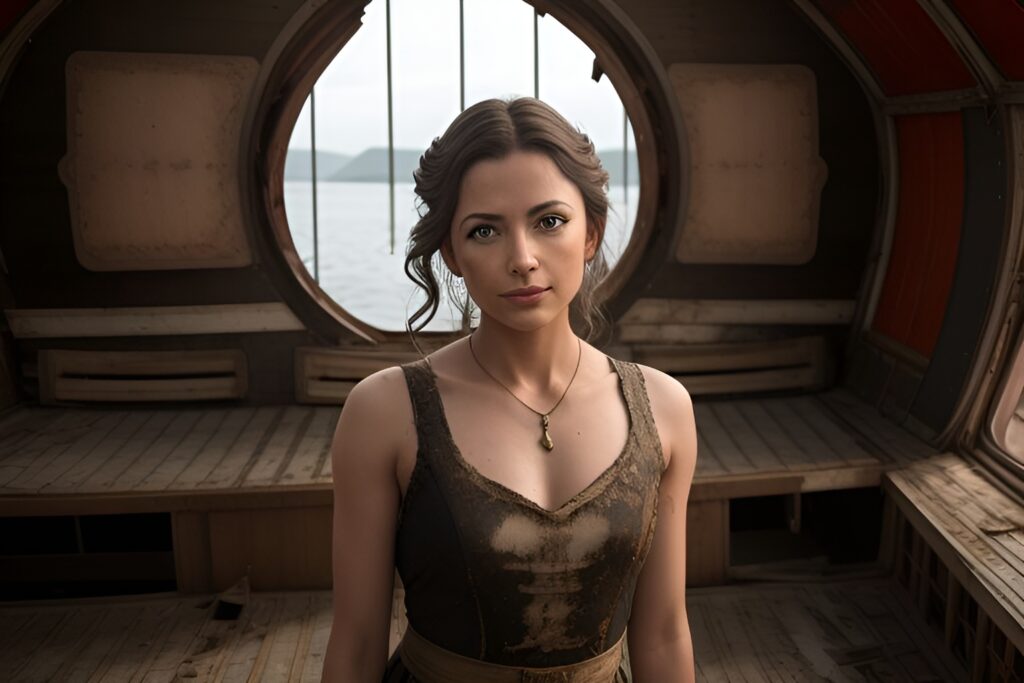Etymologically, the word ‘symbol‘ derives from the Greek symbolon meaning ‘token’ or ‘watchword’. Thirst was the second of O’Neill‘s plays to be produced, preceded by “Bound East for Cardiff”. Thirst, although strikingly similar in design to Fog, is much more frankly experimental in its use of symbols. Three people from widely separate social levels — a Mulatto sailor, a Dancer and a Gentleman — are cast away on a raft. Instead of the Ancient Mariner‘s fog. there is a Coleridgean sun, glaring down. Heat waves writhe upward front the deck of the raft, and circling the castaways are sharks whose fins can be seen cutting the water. Despite their common predicament, the three are separated by social, as well as psychological forces. The Gentleman and the Dancer represent the upper class white world, while the Sailor, a mulatto, represents the lower class, and obviously a nonwhite, world.
Colours are used as effective symbols in the play. Upon the white deck of the raft, all three are literally linked by “blackness.” The Sailor is defined by his skin color — in the original production, O’Neill himself played the character in blackface — and he wears a navy blue — almost black — outfit. While the sailor is alienately described as “Negro” and “mulatto,” it is clear that the black/white dichotomy is a functioning, almost expressionistic, element of the play’s theme. The term “mulatto,” indicating parentage of mixed “race,” is perhaps even more appropriate to O’Neill’s aim in that the mixed cultural background of the Sailor is yet one more means of establishing a common bond among the three lost souls. The Gentleman wears a while shirt with black slacks, a black tie, has black hair, and perhaps in a most telling detail, is marked by a line of black moustache dye running down the side of his face. Providing an additional image of blackness, O‘Neill also describes how the man “licks his swollen lips with his blackened tongue.” The Dancer is also clad in black, her costume of velvet and spangles set off by her blonde hair. However. “continuous weeping has made a blurred smudge of her rouge and black eye makeup,” furthering O’Neill’s depiction of the false nature of color as a determinant of reality. In Thirst, O’Neill is clearly using color to show how closely the three are linked in their situation, in their humanity, and ultimately, in their fate. For example. each character is provided with a splash of red: the red of the lettering on the Sailor‘s sweater, the Gentleman’s bald spot “burned crimson by the sun,” and the smeared rouge on the Dancer‘s face. Before the characters even speak, they reveal their common humanity, their mutual bond of eventual doom marked by the colors they wear, with black predominant. In this case, black represents not stigma but inclusion.

Religion is used as a powerful symbol of hope and despair (may be related to Jansenism). In fact, the Dancer‘s first words are “My God! My God! The silence is driving me mad!” She continues to cry out and invoke her Christian God‘s name throughout her ordeal, doing so six more times before insanity and dehydration claim her. The Gentleman is likewise connected to his deity, calling out God‘s name twelve times while he deteriorates beneath what O‘Neill calls in his opening and closing stage directions, “a great angry eye of God.” Apparently, O‘Neill’s God is not uninterested. It is the universe that is indifferent, while God remains a force that is very much alive, although apparently very displeased with his creation.
The sharks play symbolic role in the play. The sharks symbolize mundane threats. They are also emblematic of memento mori, reminder of death. For the Sailor, the sharks, representative of his own mythology, are ever-present and able to be appeased through his song: “It is a charm. I have been told it is very strong.” His belief is not merely ignorant superstition. which would reflect a negative stereotype of African ethnicity. For the Sailor, the invocation is his equivalent to a Christian prayer or psalm — words intended to invoke protection and comfort — though both “charm” and Christian appeal would fail to provide salvation. The Gentleman retorts shortly thereafter, seeing the Dancer frightened by the Sailor‘s words. “At least tell her the truth about the sharks.
Thus the layers of symbols weave the brilliant texture of the play, Thirst and help the play to acquire an illusionist make-up.





